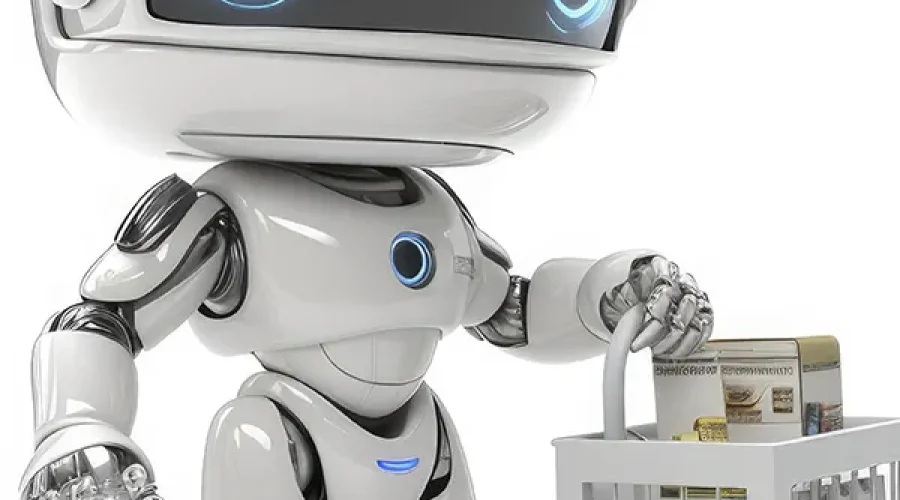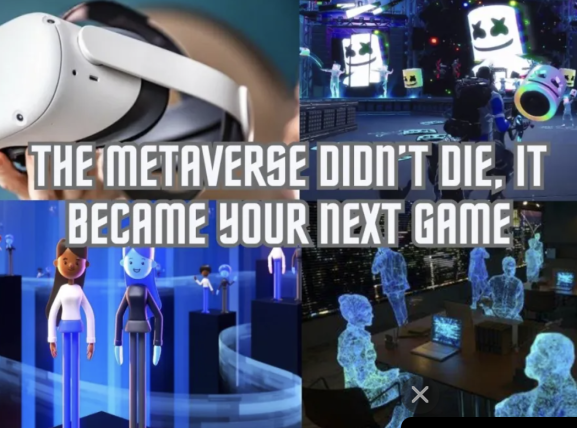Gen Z is changing the way we shop and here’s what retail could look like in 10 years
Picture virtual stores, robot helpers and drone deliveries. That’s how you’ll shop in the near future.
Retail has long been defined by aisles you can stroll, products you can touch and interactions with staff who guide your purchases. This conventional landscape, heavily reliant on physical stores and traditional advertising via television and print, once shaped the shopping experience, with the internet playing a minimal role.
Now, Generation Z, the first truly digital-native cohort, is rewriting the rules of engagement in the retail sector with their preferences and behaviors. Born into a world where the internet, smartphones, and social media are ubiquitous, zoomers’ influence is shifting the retail paradigm from predominantly in-store interactions to a complex, integrated model that blends online and offline experiences seamlessly. Their comfort with technology and demand for instant, on-demand access to products and services are driving retailers to reimagine how they connect with consumers.
Gen Z is reshaping not only the technologies that retailers invest in but also how these technologies enhance the shopping experience. Zoomers’ preference for digital interactions is best illustrated with social commerce and mobile-first shopping experiences, which have become pivotal in the current retail environment.
Social commerce and engagement
Gen Z’s preference for social media platforms such as TikTok and Instagram (META) has revolutionized social commerce. In addition to being spaces for social interaction, these platforms are now vibrant marketplaces where brands can directly engage with consumers. Chinese fast-fashion retailer Shein, for example, utilizes real-time data from social media to quickly adapt and roll out new fashion trends for young audiences. Similarly, Temu leverages aggressive social media strategies to capture and retain the attention of young shoppers.
The emphasis on mobile-first strategies is further enhancing the retail experience for Generation Z. This demographic predominantly uses smartphones for shopping, prompting retailers to optimize their digital interfaces. Amazon.com’s (AMZN) mobile app exemplifies this trend with features tailored to enhance the user experience, including personalized recommendations and a simplified shopping process. Fashion retailer ASOS’s (UK:ASC) mobile platform is equipped with user-friendly features that make mobile shopping not just functional but enjoyable.
The intersection of social commerce and a mobile-first approach is setting a new standard in retail, one that not only aligns with the digital habits of Gen Z but also points to future technological integrations.
Big-box retailers are adapting
What about the established retail players? What brands have not only adapted but also thrived amidst this demographic shift? Retail giants Target (TGT) and Walmart (WMT) are good examples, effectively integrating digital innovations and personalization techniques to appeal to the tech-savvy Gen Z consumers. They show how traditional retailers can harness new technologies and consumer insights to remain relevant and profitable in the digital age.
Target has been particularly adept at aligning with zoomers’ preferences. The company has significantly expanded its range of private labels to attract a diverse customer base looking for uniqueness as well as value, and leveraged advanced data analytics to tailor marketing strategies and store layouts that resonate with younger shoppers. Plus, Target’s robust digital marketing campaigns utilize social media platforms to engage with Gen Z where they are most active.
Walmart has also made significant strides by investing in technology to enhance the shopping experience both online and in-store. Walmart’s focus on integrating its e-commerce platforms with physical stores has enabled the company to offer seamless hybrid shopping experiences with features like “buy online, pick up in-store” (BOPIS), mobile payments, and interactive digital displays that make shopping faster and more convenient, aligning with the instant gratification that Gen Z values.
Shopping in 2035
What will retail shopping look like in 2035, roughly a decade from now? Here are some likely innovations:
Immersive virtual shopping: Through virtual reality (VR), shoppers in 2035 could navigate a digital store as realistically as they would a physical one. Shoppers would enter a fully immersive virtual environment from the comfort of their homes, using VR headsets to explore a digital storefront where they interact with products in hyper-realistic ways. For example, Nike (NKE) could create a virtual shoe-fitting experience where the texture, weight, and flexibility of the shoes can be felt through haptic feedback technology.
Hyper-personalization with AI: AI could be leveraged to create deeply personalized shopping experiences. Advanced machine learning algorithms would analyze a customer’s past purchases, browsing behaviors, and even emotional responses (captured through biometric data) to tailor product recommendations with unprecedented precision.
Instant product customization and delivery: Future technologies could enable customers to customize products in real time. Using augmented reality (AR) interfaces, shoppers might modify design elements of their products, such as color, pattern and materials, which are then instantly created using 3D printing technology at nearby fulfillment centers. Then drone- or autonomous-vehicle delivery systems will deliver your purchase within hours.
Interactive and automated retail spaces: Physical retail spaces might still exist but would operate differently. They could serve as interactive showrooms where customers meet for social shopping experiences, participate in events, and interact with products that they have pre-selected through their digital interfaces. Such locations would be equipped with robotic assistants and automated systems that prepare products for immediate takeaway or facilitate rapid home delivery.
Retail will continue its transformative journey, driven by the digital natives of Gen Z and beyond. The future shopping experience will be defined by immersive technologies that blur the lines between physical and virtual. But even with these technological advancements, there will still be a place for human connection and exceptional customer service.
Morning Star






